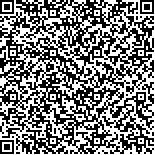下载中心
优秀审稿专家
优秀论文
相关链接
摘要

地表反照率直接决定了地表能够吸收到的太阳辐射能量,是研究气候变化、能量平衡的一个关键参数。遥感为大尺度、连续获取地表反照率提供了一种有效的观测手段。但遥感数据本身的精度限制和反演模型的不确定性,使基于卫星数据反演的反照率产品存在误差,而这种误差的存在又会影响产品的进一步应用。正确的认识这种误差有助于提高产品的应用精度,深化其应用的深度和广度。真实性检验就是正确认识卫星反照率产品准确性、稳定性的重要手段,它是卫星产品从生产到应用的桥梁。虽然目前已经开展了大量的真实性检验工作,但即使是针对同一种卫星产品,真实性检验的结果往往并不一致。其根本原因在于验证中所采用的参考值能不能够准确地代表卫星像元尺度的地面真值。地面观测和卫星产品像元之间巨大的尺度差异以及广泛分布的地表异质性,使地面观测并不能直接作为像元尺度真值与卫星产品进行简单的对比。因此真实性检验过程并不是直接的,而是需要经过一系列严格、独立的过程得到像元尺度真值后与产品在一定的空间和时间范围内进行对比。针对目前真实性检验结果准确性和可信度不高等问题,本文尝试从地面实测数据、尺度转换、验证方式、评价方法及验证中存在的问题等几个方面来论述反照率产品的真实性检验现状及挑战。
Validation of satellite-derived albedo products is an essential precursor to scientific research and subsequent environmental monitoring. Unlike the simple comparison between two datasets, validation involves determining the ground truth at pixel scale that exists independently. The reliability of validation results depends on the accurate treatment of ground-based measurements, upscaling, and assessment methods. This study analyzed the current state and development trends of validation technique specifically for remote sensing of albedo products.
Ground-based measurements are the primary source of truth value at pixel scale to validate remote sensing products. The balance between the comprehensiveness and strictness of a validation can be achieved by selecting either the extensively distributed but sparse networks or small-scale but dense networks depending on each specific goal. However, ground measurements cannot provide sufficient information for the acquisition of truth value at pixel scale due to their limited spatial scales. Moreover, this finding was especially true for heterogeneous surfaces. Therefore, an upscaling technique should be explored to minimize errors due to the large spatial-scale difference between ground measurements and satellite product pixels. High-resolution imageries can provide spatial distribution characteristics of surface albedo within a coarse pixel, and these imageries can address the severity of the upscaling problem. Apart from these factors, the quality index, the effect of solar zenith angle, and the choice of albedo can all affect the quality of validation.
The sparse networks can ensure the comprehensiveness of the validation but ignore the scale problems embodied in the validation. The dense networks can address the scale problem but cannot support the validation on a global scale. With regard to upscaling issues, the combination of ground measurements and high-resolution imageries can provide ideal upscaling results. However, differences remained among different methods. The traditional multi-scale validation strategy suffered from critical uncertainties caused by high-resolution albedo maps'errors, geometric mismatches, and calibration model errors. Recently, the upscaling method based on the idea of trend surface has attracted the attention of scholars whose interest is the validation field. This method compensates the errors of high-resolution maps and calibration model, thus improving the quality of upscaling results. The quality index of satellite albedo products should be considered in validation. Otherwise, wrong results may be obtained. Moreover, ground measurements with solar zenith angle exceeding 75° should be discarded.
Great achievements have been obtained with regard to ground measurements, upscaling, and assessing methods in the past few years. Nevertheless, the accuracy of validation results remained hindered by several problems, which had not been seriously considered. This study provided an overview of existing validation activity, including ground-based data acquisition and processing, upscaling method for calculating the reference at pixel scale, and assessment method. Furthermore, their key challenges were also presented.

